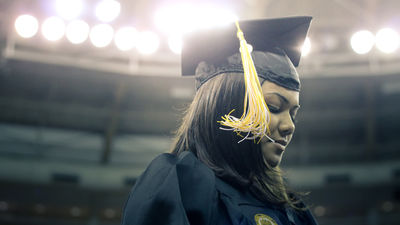The elite school is full of wealthy students, the chain of poverty continues

"Born only in poor families, it becomes disadvantageous in academic ability, future income and health conditionAs shocking research results are announced, poverty is said to link from parent to child. A large-scale survey of household incomes of 30 million students attending American universities has revealed the fact that wealthy students are concentrated in so-called elite schools called "prestigious".
The Equality of Opportunity Project
http://www.equality-of-opportunity.org/
Some Colleges Have More Students From the Top 1 Percent Than the Bottom 60. Find Yours. - The New York Times
https://www.nytimes.com/interactive/2017/01/18/upshot/some-colleges-have-more-students-from-the-top-1-percent-than-the-bottom-60.html
Stanford University'sRaj ChoiProfessor 's research team tracked about 30 million students born in the United States from 1980 to 1991 and examined the relationship between students entering college and income at home. As a result, it has been found that there is an extremely strong correlation between richness and university entrance.
The figure below shows the number of students enrolled in the upper-income upper-income 1% higher-income students on the left, and the poorest family students with the lower income 20% on the right. It is worth noting that, unlike Japan, prestigious universities in the United States are more private than private, generally private universities are more popular than public universities, so-called elite is aiming for private universities. In the figure below, the light blue color is a student who entered a private university, a student whose orange color advanced to a public university, and the number of students whose red color has not advanced to the university are represented by the area, and many of the wealthy people go to private universities On the other hand, for poor students, only a small number of students go on to private universities, and in poor students more than 40% do not go on to university.
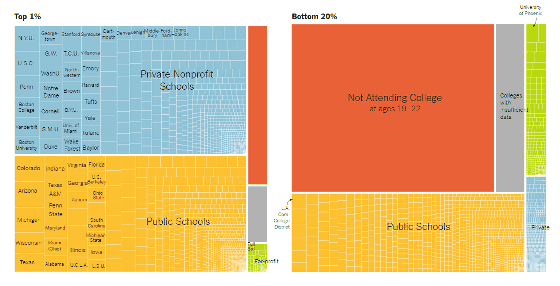
Despite the fact that the ratio of the top 1% of the wealthy and the bottom 60% of the poor and the middle class differ greatly among the population, some of the wealthier students are more than the poor and middle class students There were 38 universities with many students. Washington University St. Louis was the biggest difference between students in the wealthy and those in the poor and middle class. HNWI students account for about one fifth of the total, and only 6.1% of the poor and middle class students. Among the universities with more students in the rich than the poor and middle class students, there are five universities, Dartmouth University, Princeton University, Yale University, Pennsylvania University and Brown UniversityIvy · Leagueis included.
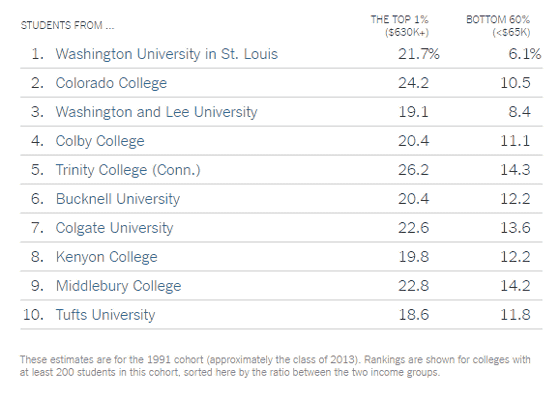
Graph showing blatantly that only high net worth students go on to prestigious universities is the percentage of students going to school by income below. The prestigious schools of "Ivy plus" (ibby · league and above) are the most abundant students of the top 0.1% of the income, and hereafter, as incomes declines to the top 1%, 5%, 10% of the income, Ivy plus and Elite The proportion of students in elite schools has declined.
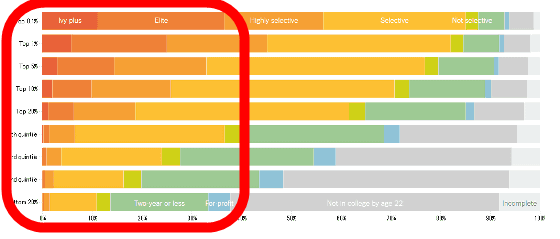
In addition, the percentage of elite schools is 10% lower in income and 20% lower for students below 5%, while the top 1% students exceed 10% in recent years. And, the proportion of the top 1% of the students in the elite school has been increasing in recent years, and it can be confirmed that the spread of the income disparity also appears in the proportion of the elite school students.
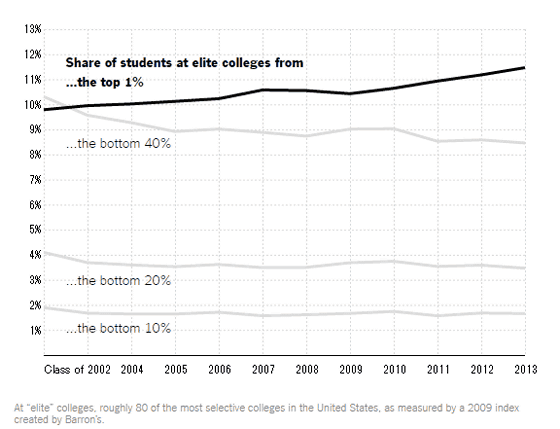
However, some elite schools also have relatively high proportions of middle and poor people. At the University of California and Los Angeles the proportion of students with the lowest income 40% is 19.2%.
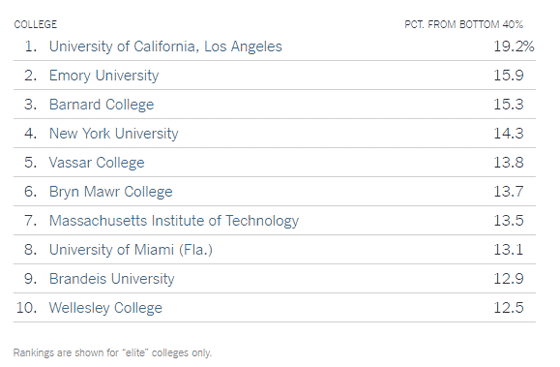
Showing the income after graduation and the income of the family after the graduation of the student is the following graph obtained by tracking the students around the age of 35 at the present time born from 1980 to 1982. The vertical axis is the income rank of the student, the horizontal axis is the income rank of the family, red is a student with Ivy plus, and blue shows all the students. It is clear from this graph that students who go to the Ivy · League even if their incomes are low have a revenue rank of 75, which means that it is easy to earn high incomes in the future and at the same time all the graphs are rising, Regardless of ranking or going on to school, high household incomes increase the income earned in the future, that is, "rich people tend to be wealthy, poor people tend to become poor".
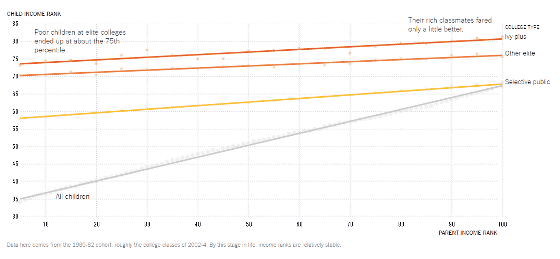
In addition, universities with many low-income families who have "up-to-date" students who earn high income in the future have also been found out. Vaughan Aeronautics and Technology University has the highest proportion of students who are home students with a lower income of 40% and who have decided to acquire the top 40% of their income after graduation. The universities in this ranking are said to have contributed to the redistribution of wealth and liquidity, because many people enriched from the poor environment.
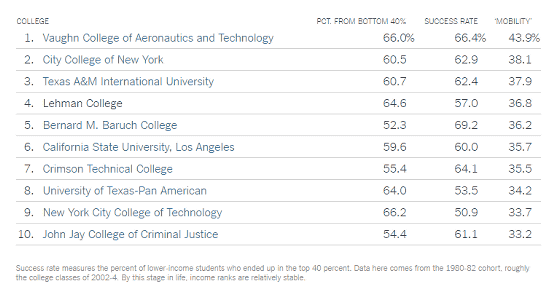
·bonus
Unlike in the United States, excellent students are more likely to be a national public university, but there are also data that more than half of the students of the University of Tokyo have incomes of 9.5 million yen or more, and there are many wealthy students in elite schools in Japan There seems to be a tendency.
The annual income of the house of Tokyo University is this.Pic.twitter.com/DvuChWSqNm
- Toshihiko Maiya (@ tmaita 77)February 1, 2015
Related Posts:
in Note, Posted by darkhorse_log

